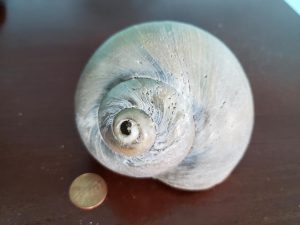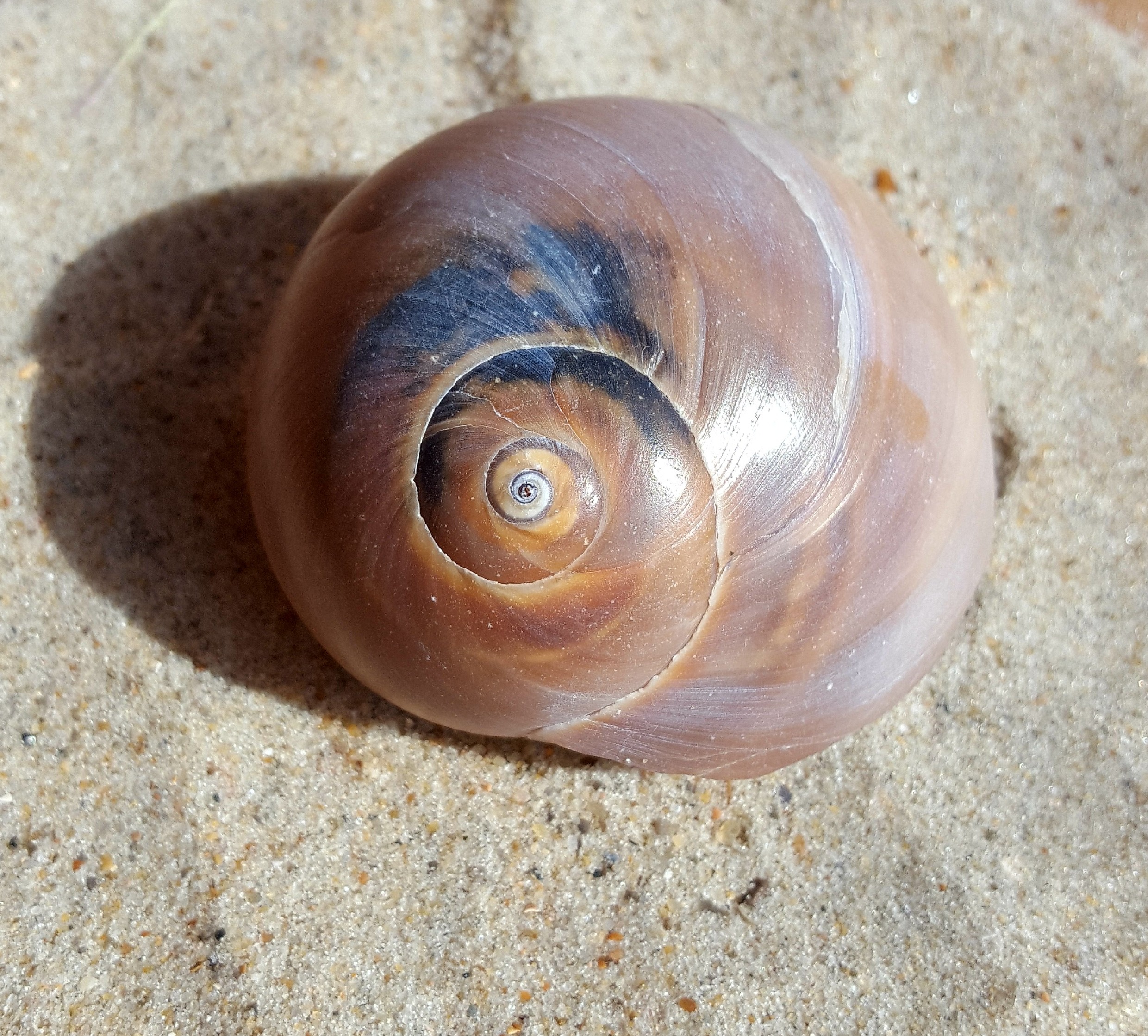
Moon Shells and Shark Eyes don’t exactly sound like real seashells that someone can find while walking along the shorelines of the Outer Banks, but believe it or not, you can. In fact, these two types of snail shells can be found fairly easily because of their globe shapes which allow them to roll smoothly through the surf, which is often rough on the Outer Banks.
The more commonly known and easier to identify out of these two types of shells is the shark eye shell. There is only one variety of shark eye shell found around the Outer Banks, but several kinds of moonsnail shells. The white moonsnail, milk moonsnail, colorful moonsnail, miniature moonsnail and the northern moonsnail have all been discovered along the coast of North Carolina and I won’t bore you with the Latin names. It must be noted that there are varieties of the moonsnail that are found in all of the world’s oceans, but for this article, we are focusing on the mid-Atlantic species.
There are many similarities between the shark eye and moonsnail shells. For instance, they are all carnivores and they all lay eggs which are born free-swimming shells. The female makes a protective “sand collar” from mucus, and lays the eggs underneath these rainbow shaped sand clumps. During the summer, beachcombers can often find these collars washed on the shore too.
They are also similar in color as well. The shark eye is usually a bluish-brown or purplish-gray, which is similar to the northern moonsnail. Specimens of the northern moonsnail that are found south of Cape Hatteras are believed to be fossil shells. The white and milk moonsnail resemble each other in color, as do the miniature and colorful moonsnail to a novice collector.

These shells are gastropods, which are single coiled shells where a soft-body snail lives inside. Attached to the soft body snail, near the opening, is the foot. The foot is used to help the shell move around the ocean floor and attack their prey. Attached to the foot is operculum which is like a lid or a trap door. This trap door allows the snail to safely tuck inside its shell to get away from predators, and more importantly, it helps the snail stay moist and not dry out. A beachcomber can occasionally find an operculum washed up on the shore as well. It is paper-thin and resembles the shape of the snail shell, and is typical found resting in piles of seagrass or seaweed.
Another similarity between the shark eyes and the moonsnails are the beautiful spirals they can make on their globe-shaped bodies. During its lifetime, the snail adds on layers as it eats and grows. Each turn of these spirals is called a whorl. The collection of all of these whorls is called the spire, except for the last whorl. The last whorl at the opening of the shell is known as the body whorl, and is often the largest. The shark eye snail gets its name because there is a dark line that follows the spire which resembles an eye.
It is extremely hard to identify the species of snail shell by looking at just the top of the shell alone, so flipping it over and examining the bottom of the shell makes identification much easier. On the bottom side of the shell, there is a center piece known as the umbilicus. The umbilicus is a hollow spot within the whorls and the formation of these umbilicus is unique in all of the varieties of moonsnails compared to the shark eye. The shark eye’s umbilicus is almost completely covered by a button-like lobe. The white moonsail’s umbilicus is partially covered by a similar looking lope of the shark’s eye, but this one is white and shark eye’s is dark brown or grey. The milk moonsnail’s umbilicus is partially covered by callus, so it appears darker than the white moonsail. The umbilicus area on the colorful moonsnail is almost completely covered by a white callus compared to the miniature moonsnail, which has a narrow umbilicus covered by a flattened callus. Finally, the northern moonsnail has a deep umbilicus which is partially covered by a lobe. When comparing the northern moonsnail and the shark eye, the umbilicus is smaller and deeper on the moonsnail than the shark eye.
The largest recorded shark eye shell found in North Carolina measured 3.5’’ and the largest moonsnail is the northern moonsnail, measuring over 4”, but they call also be found under 0.1”.
The next time you find yourself on the Outer Banks maybe you will come across one of these beauties of the sea. Happy hunting!



